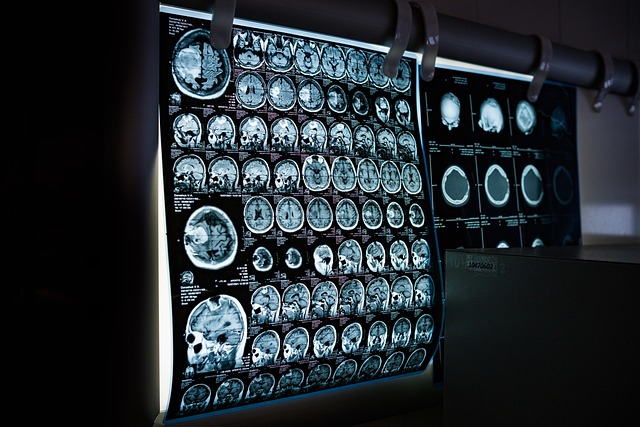Pleural effusion, fluid buildup around lungs from various conditions, causes breathing difficulties and distorted lung structures visible on imaging like lung CT scans. Ultrasound, a non-invasive tool using sound waves, assists in diagnosing and monitoring effusion size, guiding drainage procedures, and offering real-time feedback compared to ionizing radiation of lung CT scans. Lung CT scans provide detailed cross-sectional images for identifying subtle changes, while ultrasound is sensitive in detecting free fluid and guiding thoracentesis. Effective management involves strategic approaches combining fluid drainage, targeted therapies, and monitoring with potential surgical intervention.
“Pleural effusion, the abnormal accumulation of fluid around the lungs, can lead to significant respiratory complications and require prompt diagnosis. This article delves into the non-invasive imaging technique of ultrasound as a valuable tool for detecting pleural effusion and identifying associated lung abnormalities. We explore its advantages over traditional methods like lung CT scans, offering a cost-effective and readily accessible alternative. Additionally, we discuss effective management strategies for lung issues stemming from pleural effusion.”
Understanding Pleural Effusion and Its Impact
Pleural effusion refers to the abnormal accumulation of fluid around the lungs, known as the pleural cavity. This condition can be caused by various factors, including pneumonia, heart failure, lung cancer, or inflammatory conditions. When present, a pleural effusion may compress the lungs, leading to breathing difficulties and reduced lung function. In some cases, it may also distort the normal lung structure visible on imaging studies like a lung CT scan, making it essential for healthcare professionals to carefully interpret these images.
The impact of pleural effusion can be significant, potentially causing pain, shortness of breath, and even life-threatening complications if left untreated. Therefore, accurate diagnosis and timely intervention are crucial. Ultrasound is often the initial imaging choice due to its non-invasive nature and real-time capabilities. It helps in assessing the size and characteristics of the effusion, guiding drainage procedures if needed, and monitoring response to treatment.
The Role of Ultrasound in Diagnosis
Ultrasound plays a pivotal role in the diagnosis of pleural effusion and associated lung abnormalities, often serving as a non-invasive alternative to a lung CT scan. It is particularly useful for evaluating the presence, size, and characteristics of effusions, which can be challenging to assess with visual examination alone. By using high-frequency sound waves, ultrasound provides real-time images of the pleural space and adjacent lung structures, allowing radiologists to detect anomalies such as fluid accumulation, thickening of the pleura, or underlying lung consolidations.
In comparison to a lung CT scan, ultrasound offers several advantages, including accessibility, cost-effectiveness, and absence of ionizing radiation. It is easily accessible in various clinical settings, making it a convenient choice for initial evaluation. Moreover, ultrasound can be performed bedside, enabling rapid assessment and guiding interventions like thoracentesis if necessary. This prompt availability of information makes ultrasound an invaluable tool for managing patients with suspected or known lung abnormalities, including pleural effusions.
Comparison: Ultrasound vs. Lung CT Scan
While both ultrasound and lung CT scans are diagnostic tools for evaluating pleural effusion and lung abnormalities, they offer distinct advantages and limitations. A lung CT scan provides detailed cross-sectional images of the lungs, allowing radiologists to identify subtle changes in tissue structure, consolidate air spaces, or detect small nodules not visible on ultrasound. It’s particularly valuable for assessing complex cases or monitoring treatment responses over time.
On the other hand, ultrasound is a more accessible and cost-effective option, offering real-time imaging with no radiation exposure. It’s highly sensitive in detecting free fluid in the pleural space and identifying large or loculated effusions. Ultrasound also facilitates guidance for procedures like thoracentesis, making it a practical choice for initial assessment and rapid intervention when immediate information is crucial.
Effective Management Strategies for Lung Abnormalities
Effective management strategies are crucial for addressing lung abnormalities revealed through ultrasound examinations, particularly in cases of pleural effusion. One key approach is a comprehensive evaluation using advanced imaging techniques like a lung CT scan. This detailed scan provides a clearer view of lung structures, allowing healthcare professionals to identify and classify specific abnormalities more accurately.
Additionally, appropriate management may involve drainage procedures for excess fluid, such as thoracentesis, coupled with targeted therapy tailored to the underlying cause. Close monitoring is essential to assess the effectiveness of these interventions and make informed decisions regarding further treatment options, including surgical intervention if necessary.
Ultrasound has proven to be a valuable tool in diagnosing and managing pleural effusion and associated lung abnormalities, offering a non-invasive alternative to more extensive imaging like the lung CT scan. By swiftly identifying fluid accumulation and evaluating lung architecture, ultrasound enables prompt management decisions, particularly in emergency settings. While a lung CT scan provides detailed cross-sectional images, ultrasound’s real-time capabilities and accessibility make it a preferred choice for initial assessment, especially in resource-limited environments. This cost-effective, easy-to-perform technique is crucial in streamlining patient care and improving outcomes for those suffering from pleural effusion and related lung conditions.
